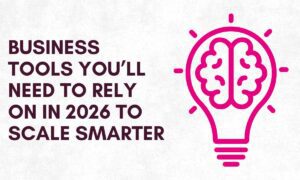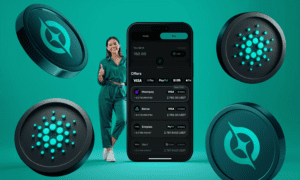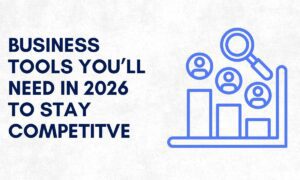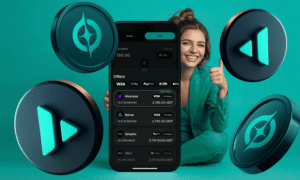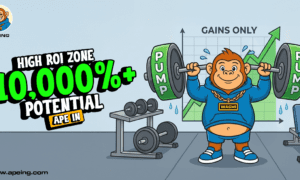In the digital economy, user interface (UI) and user experience (UX) design are not merely aesthetic components—they are strategic assets. Businesses that invest in professional UI/UX services consistently realize higher conversion rates, deeper customer engagement, and stronger brand loyalty. Below is a detailed, data-driven exploration of how UI/UX investments directly contribute to a company’s return on investment (ROI).
Understanding ROI in UI/UX Design
ROI from UI/UX design refers to the quantifiable gains—monetary and otherwise—that businesses receive by enhancing the usability and visual appeal of digital platforms. This includes:
- Increased revenue through higher conversions
- Reduced churn and increased customer lifetime value
- Lower development and maintenance costs
- Shorter time-to-market for new features
- Stronger customer satisfaction and brand equity
By focusing on user-centered design, companies ensure that their digital products align with real user needs, leading to efficient performance and long-term growth.
First Impressions Matter: Visual Design Drives Trust
Users judge the credibility of a digital platform within milliseconds. A well-executed UI/UX design immediately establishes trust, increasing the likelihood of user engagement and conversion. On the other hand, poor design leads to premature exits and negative brand perception.
Measured impacts include:
- Lower bounce rates
- Higher time-on-site metrics
- Increased interaction per session
Professional designers combine aesthetics with intuitive navigation, ensuring the first impression leads to deeper engagement.
Conversions Are the Direct Outcome of Optimized UX
An intuitive and seamless UX guides users toward completing desired actions. Whether it’s filling out a form, making a purchase, or scheduling a demo, conversion-focused design eliminates friction and confusion at every stage.
According to Forrester Research:
- A better UI design can increase conversion rates by up to 200%
- Improved UX design can drive conversion increases of up to 400%
High-performing UX includes:
- Streamlined navigation
- Compelling call-to-actions
- Optimized mobile responsiveness
- Data-driven layout and hierarchy
These design elements ensure visitors take action, directly impacting bottom-line performance.
Reduced Costs Through Efficient Development
Design flaws discovered during development or after launch are significantly more expensive to fix than those caught early. By investing in UX research, wireframing, and prototyping, companies minimize the risks of post-launch corrections and product failure.
Key financial benefits:
- Lower redesign costs
- Efficient developer handoff with design systems
- Reduced project timelines
- Fewer rounds of stakeholder revisions
The result is a faster time-to-market and a higher-quality product delivered at lower cost.
Stronger Customer Retention and Loyalty
Customer loyalty isn’t just about product features—it’s about how customers feel when using your product. Good UX design creates emotional connections, increasing retention and driving lifetime value.
UX impacts retention through:
- Easy-to-navigate user flows
- Personalized user journeys
- Seamless onboarding experiences
- Consistent visual and functional experiences
When users feel comfortable and understood, they return—and they refer others.
Competitive Advantage and Brand Differentiation
In saturated markets, design is a key differentiator. Businesses with superior UX gain competitive advantages by offering more intuitive, enjoyable, and effective experiences.
Key results include:
- Higher brand recall
- Better online reviews
- Increased customer trust and confidence
- Stronger performance in comparison testing
Companies that prioritize design are perceived as innovative, premium, and trustworthy.
Inclusive Design Expands Market Reach
Investing in accessible and inclusive UI UX design enables brands to reach broader audiences, including users with disabilities. This not only drives growth but also ensures compliance with regulations like ADA and WCAG.
Inclusive design advantages:
- New market opportunities
- Improved public perception
- Reduced legal liability
- Enhanced usability for all users
An accessible design is not a constraint—it’s a catalyst for inclusivity and scalability.
Continuous Improvement Through UX Analytics
Modern UI/UX doesn’t end at launch. Professional designers use behavioral analytics, user testing, and A/B experimentation to refine interfaces continuously.
Tools and metrics include:
- Session recordings and heatmaps
- Funnel analysis and conversion tracking
- Task success rates and user satisfaction scores
- Feedback loops and usability testing
This data-centric approach ensures the design remains aligned with user expectations, business goals, and emerging trends.
Case Studies: Real ROI from UI/UX Investment
Example 1: OCloud Solutions – .NET SaaS Platform
OCloud Solutions, a provider of cloud-based SaaS solutions built on .NET, saw a remarkable turnaround after investing in professional UI/UX design services. The original platform was functional but suffered from high churn rates, low engagement, and confusing navigation paths.
After a full redesign focused on user flows, information hierarchy, and onboarding simplicity, the results were significant:
- Conversion rate increased by 42% across all user acquisition channels
- Churn rate dropped by 31% within the first three months
- User session duration grew by over 2 minutes on average
- Customer satisfaction scores (CSAT) rose from 68% to 91%
By investing in user research, prototyping, and iterative UX testing, OCloud transformed its digital product into a high-performing, scalable solution—resulting in substantial ROI and long-term growth.
Example 2: Airbnb
Airbnb’s meteoric rise can be attributed in part to its emphasis on user-centered design. By improving search filters, streamlining the booking process, and enhancing trust elements like host reviews and real-time availability, Airbnb created an intuitive experience that encouraged repeat usage and referrals.
Example 3: Amazon
Amazon continuously iterates on UI/UX across its ecosystem. From personalized product recommendations to one-click checkout, every interaction is crafted to reduce friction. The result is industry-leading user retention, high customer loyalty, and astronomical revenue per visitor.
Final Thoughts: Design Is the Engine of ROI
Professional UI/UX design is one of the highest-ROI investments a company can make. It influences every metric that matters—from conversion and retention to brand trust and development efficiency. In a market where users expect seamless digital experiences, design excellence is not just beneficial—it’s mandatory for survival and success.
Businesses that embrace professional UI/UX design services will not only enhance the user experience but also drive measurable growth, outpacing competitors and scaling more sustainably.












